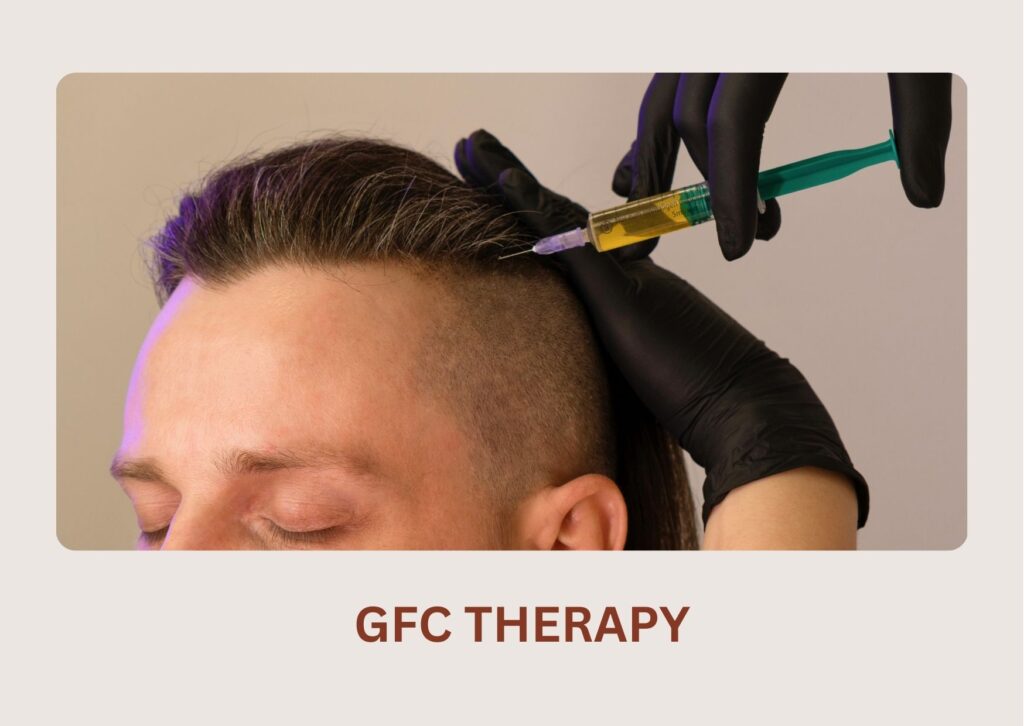
Thick, Healthy & Confident Hair with Male Hair Loss Treatment
Hair loss is one of the most common concerns affecting men of all ages, often leading to reduced confidence and noticeable thinning over time. At Urban Skin and Hair Clinic, our advanced male hair loss treatments are designed to target the root cause of hair thinning, strengthen weak follicles, reduce excessive shedding, and promote natural hair regrowth. Whether caused by genetics, hormonal changes, stress, or lifestyle factors, our expert dermatologists offer personalised, science-backed solutions tailored to your specific hair needs. With a combination of medical therapies, growth-boosting treatments, and customised care plans, we help men achieve thicker, fuller, and healthier hair for long-lasting confidence.
What is Male Hair Loss?
Male hair loss is a progressive condition most commonly caused by genetics and hormonal sensitivity to DHT, leading to thinning hair, receding hairlines, and balding patterns. Men may experience hair loss due to stress, nutritional deficiencies, lifestyle factors, or scalp issues as well. At Urban Skin and Hair Clinic, male hair loss is treated with advanced, evidence-based solutions that target weak follicles, reduce excessive shedding, and stimulate new hair growth for long-lasting density and confidence.

What Are the Types of Men's Hair Loss?
- Androgenetic Alopecia (Male Pattern Baldness):
This is the most common type of hair loss in men, caused by genetics and hormone sensitivity (DHT).
Appearance: Gradual thinning, receding hairline, thinning on crown, eventually forming an “M” or “U” shaped pattern.
Common Areas: Hairline, temples, crown. - Telogen Effluvium:
A temporary form of hair shedding triggered by stress, illness, medications, or nutritional deficiencies.
Appearance: Sudden increase in hair fall, overall thinning, reduced hair volume.
Common Areas: Entire scalp. - Alopecia Areata:
An autoimmune condition where the immune system mistakenly attacks hair follicles.
Appearance: Round, smooth, coin-sized bald patches; may grow or shift over time.
Common Areas: Scalp, beard, eyebrows. - Traction Alopecia:
Hair loss caused by continuous pulling or tension from tight hairstyles, helmets, or repeated styling habits.
Appearance: Thinning or broken hair strands; gradual recession of the hairline.
Common Areas: Hairline, temples, sides of the scalp. - Scarring Alopecia (Cicatricial Alopecia):
A rare but severe type where inflammation damages the hair follicles permanently.
Appearance: Smooth, shiny, scar-like bald patches where hair cannot regrow.
Common Areas: Scalp (various regions depending on the type). - Diffuse Thinning:
Uniform thinning across the scalp due to hormonal imbalance, poor nutrition, thyroid issues, or chronic stress.
Appearance: Lack of density, widened hair parting, visibly thinner strands.
Common Areas: Entire scalp.
Popular Treatments for Hair Loss
A highly effective treatment where your own growth-factor-rich plasma is injected into the scalp to strengthen follicles, reduce hair fall, and boost regrowth.
Advanced version of PRP that offers higher growth factor concentration for faster and more noticeable results.

A nutrient-rich cocktail of vitamins, peptides, and growth boosters is delivered into the scalp to improve hair density and reduce thinning.
A permanent solution where healthy follicles from the donor area are transplanted to bald or thinning areas for natural, long-lasting results.
Fine needles create microchannels on the scalp to enhance absorption of growth serums and activate collagen production.
Reasons of Hair Loss in Men
Hair loss can be a source of embarrassment for many men, and it can also be a sign of a more serious health issue. While male-pattern baldness is the most common cause of hair loss in men, there are many other reasons why men may experience hair loss. Understanding the underlying causes of hair loss can help men find the right treatment options to restore their hair and regain their confidence.
- Genetic dysfunction, also known as male pattern baldness or androgenic alopecia, which leads to oversensitive hair follicles in DHT sensitive areas of the scalp.
- Hormonal imbalances can also cause hair loss in men.
- Systemic diseases associated with hair loss can contribute to male baldness.
- Certain medications, including antidepressants, anti-psychotics, and anti-anxiety drugs, can cause hair loss in men.
- Chemotherapy and radiation therapy used to treat cancer can also lead to hair loss in men.
- Poor nutrition, unhealthy lifestyle, junk food consumption, increased pollution, and stress can also contribute to hair loss in men.
Before & After Results







Benefits of Hair loss Treatment
PRP Hair Treatment is a natural, effective way to restore thinning hair, stimulate growth, and improve overall scalp health without surgery. It reactivates weak hair follicles, strengthens existing hair, and increases density for fuller, healthier-looking hair.
- Stimulates natural hair growth using your own platelets
- Strengthens weak and damaged hair follicles
- Reduces hair fall and slows hair thinning
- Improves overall hair density, volume, and thickness
- Provides long-lasting, natural-looking improvements in hair quality
- Safe, non-surgical, and minimally painful procedure
- No downtime; quick 30–45 minute session
- Suitable for both men and women
- Boosts healing and results after a hair transplant
- Provides long-lasting, natural-looking improvements in hair quality
Pre and Post Treatment Care
Pre-Treatment Care
- Avoid blood-thinning medications like aspirin for 3–5 days (only if your doctor approves).
- Do not drink alcohol or smoke for at least 24 hours before the session.
- Stay well-hydrated, drink plenty of water.
- Eat a healthy meal before coming to avoid dizziness.
- Avoid applying hair oils, sprays, or styling products on the day of treatment.
Post-Treatment Care
- Do not wash your hair for 24 hours after the procedure.
- Avoid touching, rubbing, or massaging the treated area.
- Avoid heavy exercise, sweating, and gym workouts for 24–48 hours.
- Avoid alcohol, smoking, and blood-thinning medications for 24 hours.
- Do not apply hair oils, serums, or chemical treatments for at least 2–3 days.
How Treatment Cost Is Decided
The cost of any treatment depends on several key factors that determine the type, intensity, and number of procedures required. Since every patient’s condition, goals, and expectations are different, the final pricing is customised to ensure safe, effective, and personalised care.
- Severity of the Condition
- Type of Treatment Recommended
- Number of Sessions Required
- Technology & Equipment Used
- Doctor’s Expertise & Clinic Standard
- Customisation of the Treatment Plan
- Area/Extent of Treatment
Get An Appointment
How Hair Loss Treatment Works at Urban Skin and Hair Clinic
1. Expert Consultation & Scalp Diagnosis
Our dermatologist performs a detailed scalp examination to identify the exact cause of hair loss, including genetics, hormones, stress, or scalp conditions.
2. Customised Treatment Plan
Based on your hair type and condition, a personalised plan is created using medical therapy, PRP/GFC, mesotherapy, or laser treatments.
3. Strengthening & Reviving Hair Follicles
Advanced growth-boosting therapies nourish weak follicles, reduce excessive hair fall, and stimulate new hair growth.
4. Progress Tracking & Maintenance Care
Regular follow-ups help monitor improvement, adjust treatments if needed, and provide long-term hair care guidance for lasting results.
Why Urban Skin and Hair Clinic

TEAM OF CERTIFIED DERMATOLOGISTS

US-FDA APPROVED EQUIPMENTS

HIGHLY STANDARDISED PROTOCOLS

1 LAKH + HAPPY CLIENTS
FAQ for Male Hair Loss Treatment
While it can’t always be fully reversed, early treatment can stop progression and even regrow lost hair in many cases.
Yes, PRP stimulates growth and thickens hair, especially in early to moderate stages of balding.
Absolutely. All procedures are dermatologist-supervised and use FDA-approved technology and products.
Visible improvement usually begins within 2–3 months, with full results after 4–6 months of consistent treatment.
Yes, male hair loss treatment is highly effective when started early and tailored to your specific condition. Advanced therapies like PRP (Platelet-Rich Plasma), mesotherapy, laser therapy, and medications help strengthen hair roots, stimulate dormant follicles, and slow down further hair loss.
Consult a Specialist Today
Dr. Kiran Chotaliya, M.D. Dermatologist & Hair Transplant Surgeon, has transformed the lives of countless male patients suffering from hair loss. His patient-first approach and deep expertise in both medical and surgical hair restoration make him one of Pune’s most trusted names in men’s hair care.















